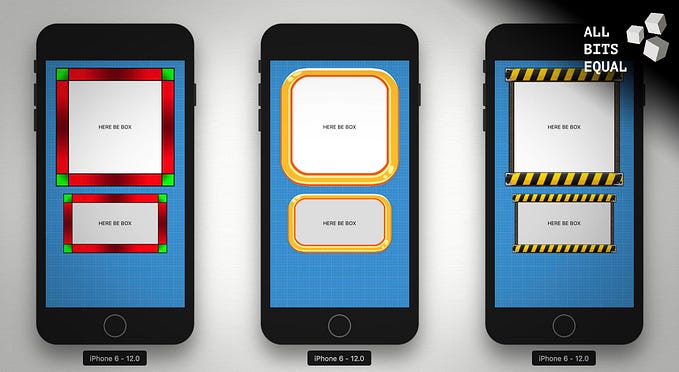Taking Games Apart: How to design a simple Idle Clicker
Starting today there will be a new series of articles where I take either a genre or a specific game and try to break it down to the basic level. While this process helps to understand game mechanics and unravel the often seemingly complex game systems put in place by the developers, it’s also a good practice to reduce and refine what’s really important. You can add a lot of fluff to a game with no meaning and you won’t end up with a great product. Making sure that the core components, systems and ideas are well formulated and planned will help you create a solid foundation for all those pretty graphics, catchy music and world-building stuff.

DISCLAIMER: Games are more than the sum of their parts. A great and memorable game is often built on the shoulders of a great team of equally talented and passionate people. Taking games apart and breaking down all of their components might yield a formula for mechanics but do not expect to always find the “FUN” part so that you can reuse it for your own games.
To keep things simple in the first instalment of this series, I decided to pick a genre which is both well presented in recent mobile titles as well as simple in its core.
THE IDLE CLICKER!
A genre that is formally known by its less catchy title of “Incremental games”. The basic idea of incremental games is that the player performs a simple action like “a click” to earn a reward in the form of currency. The player then chooses to either “click again” or use said currency to increase the value of each click. Many iterations of this genre include the option to purchase means of automated clicking, hence the word “idle” in the title.
One of the most notable examples and (as far as my quick research went) probably the mother of all titles in this genre is “Cookie Clicker”, an incremental game that gained popularity in 2013 and was inspired by the text-based and pretty bizarre “Candy Box” ASCII Art RPG. You click on a cookie button to bake a cookie. Your reward is a currency of one cookie that you can then use to hire auto-clicking cursors and grandmas to periodically click or bake more cookies per minute (CPM) and as you can imagine, the game doesn’t stop there.
Let’s take a look at the core gameplay cycle. Click a cookie to bake/get a cookie.

Once you reach a certain amount of cookies, you can purchase items that automatically click or bake cookies every few seconds. This means you now have 2 sources of income, automated (cursor or grandma) and user-generated (click).

You can also purchase upgrades that improve either manual or automated clicks, sometimes both.

This leaves the player with the following actions
- Click to earn currency
- Purchase new or improved automaton to generate currency
- Purchase new or improved upgrades to increase currency gain
From this point on, you simply add more automatons every X amounts of currency gained or upgrades purchased. To keep things interesting, you add a bit of math and raise the price for each new automaton and upgrade after each purchase while granting greater rewards in return and this, basically, is it. A fully-fledged game, keeping millions of players glued to their devices for hours on end with no salvation in sight.
Joke aside, I’ve played my fair share of cookie clicker and other games like this. It can be good and healthy fun for a while as you can always put it down and pick it up when you feel like it. Those games are often as “idle” as you want them to be. Either you buy a few things, set it aside and return a few hours later to reap the rewards OR you keep the tab open, check every now and then if the next upgrade is purchasable and start making calculations whether the new upgrade has a better ROI over the new automaton.

Here are a few things you can do to spice things up a bit. I have to stress that none of those are my own ideas, they are just a few examples from popular games in this genre but I’ll leave it to you to spot the games I’ve picked from.
A) Create synergies
Let a category of automatons generate additional income based on the amount of another category or the number of upgrades of a certain type.
B) Have events
Allow certain limited/short events to take place randomly that offer a small twist in the gameplay or simply a straight forward increase for either generated or manual income or allow the player to purchase upgrades/automatons for a cheaper price during the event window.
C) Add a narrative
Create a story around the clicker and start creating meaning behind the player actions. Post small updates to the player about the effects of his actions or maybe include NPCs that comment on the players’ decisions or game events. Achievements are always a good idea … or are they?
D) Create a new theme
Cookies have been done over and over, why not make a game that lets you build a cultist tower or mining shaft or have the players’ automaton battle the forces of evil for petty coins.
E) Combine Genres
Just take any other genre and combine the two. How about an Idle Merger where you buy and merge automaton to get better ones. Or maybe an Idle RPG where your heroes battle on their own and you only supply them with better equipment and train their skills.
F) Include Ranking and Multiplayer
Allow people to rank in single and multiplayer ladders and allow them to form teams that can work together.
It might feel like a stretch but the currently popular game “Ulala: Idle Adventure” can check off about everything on this list and even adds lots of other stuff to keep their players busy but if you take the game apart and boil it down, you are still left with an incremental idle game combined with a strategic Team RPG.
I’ll leave off with that for now but in my next article (linked as soon as it’s done) I’ll guide you through the process of how to build a simple idle clicker game with react native in EXPO for android and iOS app stores.
Some words about me:
If you want to see more of my work and progress, feel free to check out my series on building a React Native Web App with Hooks, Bells, and Whistles with Expo SDK33. I’m also currently working on a new series about building more complex and scalable apps using React/Redux, where I’ll go into details about how and why I do stuff the way I do as well as some articles on my experience in building games for web and mobile with React. This article is only the start of it so stay tuned for future updates.
And if you feel really supportive right now, you can always support me on patreon, thus allowing me to continue to write tutorials and offer support in the comments section.










